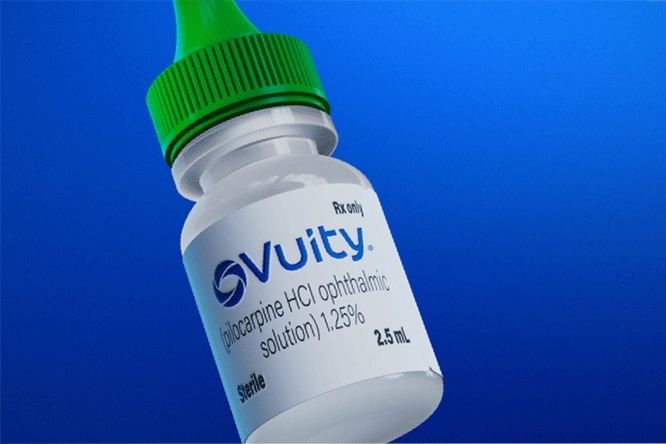
Tricyclic Antidepressants (TCAs) represent a foundational class of psychotropic medications, historically significant in the treatment of various mental health conditions, particularly depression. While newer antidepressant classes like Selective Serotonin Reuptake Inhibitors (SSRIs) and Serotonin-Norepinephrine Reuptake Inhibitors (SNRIs) have largely superseded TCAs as first-line agents due to more favorable side effect profiles, TCAs retain a critical role in pharmacotherapy. Their unique mechanisms of action, broad range of therapeutic applications, and distinct adverse effect profiles necessitate a thorough understanding for healthcare professionals and patients alike.
Enlisting Tricyclic Antidepressants (TCAs)
TCAs are structurally characterized by a three-ring chemical nucleus, from which their name is derived. They are broadly categorized based on the chemical structure of their side chain, which influences their pharmacological properties, particularly their selectivity for neurotransmitter reuptake and receptor affinity.
A. Tertiary Amines: These compounds possess a tertiary amine group on their side chain and are generally more potent inhibitors of serotonin (5-HT) reuptake, although they also inhibit norepinephrine (NE) reuptake to varying degrees. They are also typically associated with a higher burden of anticholinergic and sedative side effects.
- Amitriptyline (Elavil, Endep): One of the most widely known TCAs, often used for depression, neuropathic pain, and migraine prophylaxis. It has strong anticholinergic and sedative properties.
- Imipramine (Tofranil): The first TCA to be developed, primarily indicated for depression and childhood enuresis. It has significant anticholinergic and sedative effects.
- Doxepin (Sinequan, Adapin, Silenor): Known for its potent antihistaminic and sedative properties, making it useful at low doses for insomnia and at higher doses for depression and anxiety.
- Clomipramine (Anafranil): Unique among TCAs for its potent and relatively selective serotonin reuptake inhibition, making it highly effective for Obsessive-Compulsive Disorder (OCD).
- Trimipramine (Surmontil): Primarily used for its sedative properties in depression with accompanying anxiety or insomnia.
B. Secondary Amines: These compounds are often active metabolites of tertiary amines or are synthesized as secondary amines directly. They tend to be more selective for norepinephrine reuptake inhibition and typically have a more favorable side effect profile with less anticholinergic activity and sedation compared to tertiary amines.
- Nortriptyline (Pamelor, Aventyl): The active metabolite of amitriptyline. It is known for its relatively mild side effect profile, making it a common choice for depression, neuropathic pain, and migraine prophylaxis, especially in the elderly.
- Desipramine (Norpramin, Pertofrane): The active metabolite of imipramine. It is considered one of the most selective norepinephrine reuptake inhibitors among TCAs, with less sedative and anticholinergic effects.
- Protriptyline (Vivactil): Has a more stimulating profile than other TCAs, with less sedative effect. It is predominantly a norepinephrine reuptake inhibitor.
Mechanism of Action
The therapeutic effects of TCAs are primarily attributed to their ability to modulate neurotransmitter activity in the central nervous system (CNS), though their multi-receptor activity also accounts for many of their adverse effects.
A. Primary Mechanism: Neurotransmitter Reuptake Inhibition: TCAs block the reuptake of norepinephrine (NE) and serotonin (5-HT) into presynaptic neurons by inhibiting the respective NE and 5-HT transporters (NET and SERT). This action increases the concentration of these neurotransmitters in the synaptic cleft, leading to enhanced neurotransmission.
- Norepinephrine and Serotonin: The reuptake inhibition of NE and 5-HT is thought to be the core mechanism by which TCAs exert their antidepressant effects. Different TCAs exhibit varying degrees of selectivity for these transporters. For instance, tertiary amines like amitriptyline and clomipramine are stronger serotonin reuptake inhibitors, while secondary amines like nortriptyline and desipramine are more potent norepinephrine reuptake inhibitors. The therapeutic effects of this increased neurotransmitter availability are not immediate; they typically manifest after several weeks of consistent treatment, suggesting that compensatory downstream neuronal adaptations (e.g., receptor downregulation) are involved in the antidepressant response.
B. Secondary Mechanisms (Receptor Antagonism/Agonism): Beyond reuptake inhibition, TCAs also interact with a variety of other receptors, which contribute significantly to their side effect profile and, in some cases, to their specific therapeutic uses.
- Muscarinic Cholinergic Receptor Blockade (Anticholinergic Effects): TCAs are potent antagonists at muscarinic acetylcholine receptors. This blockade causes a range of anticholinergic effects, including dry mouth (xerostomia), blurred vision (cycloplegia), constipation, urinary retention, sinus tachycardia, and cognitive impairment (especially memory deficits and confusion, particularly in elderly patients).
- Histamine H1 Receptor Blockade (Antihistaminic Effects): TCAs, particularly tertiary amines like amitriptyline and doxepin, are strong antagonists at histamine H1 receptors. This action leads to significant sedation, drowsiness, and weight gain. This sedative property can be therapeutically beneficial for patients with insomnia or severe agitation.
- Alpha-1 Adrenergic Receptor Blockade (Anti-adrenergic Effects): TCAs block alpha-1 adrenergic receptors, especially in the vasculature. This can lead to orthostatic hypotension (a drop in blood pressure upon standing), causing dizziness and a risk of falls, particularly in older adults. Reflex tachycardia can also occur as the body attempts to compensate for the hypotension.
- Sodium Channel Blockade (Cardiotoxicity): At therapeutic doses, and especially in overdose, TCAs can block cardiac fast sodium channels. This effect can lead to cardiac conduction delays, manifested as widened QRS complexes and prolonged QT intervals on an electrocardiogram (ECG), which can predispose to serious arrhythmias (e.g., ventricular tachycardia, fibrillation) and conduction blocks. This is a major concern in TCA overdose and requires careful cardiac monitoring in patients with pre-existing heart conditions.
- Other Receptors: Some TCAs also have minor effects on dopamine receptors or GABA receptors, but these are generally less clinically significant than their effects on muscarinic, histaminic, and adrenergic receptors.
Clinical Uses
Despite the advent of newer antidepressants, TCAs remain valuable therapeutic agents for a variety of conditions, often employed when first-line options are ineffective or contraindicated, or for specific indications where their unique properties are advantageous.
A. Psychiatric Indications:
- Major Depressive Disorder (MDD): Still an effective treatment, particularly for moderate to severe depression, melancholic depression, or when there is a significant vegetative component (e.g., severe anhedonia, psychomotor retardation). They are especially useful in treatment-resistant depression.
- Obsessive-Compulsive Disorder (OCD): Clomipramine is considered one of the most effective medications for OCD due to its potent serotonin reuptake inhibition.
- Panic Disorder and Agoraphobia: Imipramine and clomipramine have demonstrated efficacy in reducing panic attacks and associated phobic avoidance.
- Generalized Anxiety Disorder (GAD): Some TCAs, particularly those with more sedative properties like doxepin and amitriptyline, can be used for GAD, especially when co-occurring with depression or insomnia.
B. Non-Psychiatric Indications:
- Neuropathic Pain Syndromes: TCAs (e.g., amitriptyline, nortriptyline, doxepin) are highly effective in treating various types of chronic neuropathic pain, including diabetic neuropathy, post-herpetic neuralgia, fibromyalgia, and chronic low back pain. Their analgesic effect is independent of their antidepressant action and involves central modulation of pain pathways.
- Chronic Pain Management: Beyond neuropathic pain, TCAs are used for other chronic pain conditions, likely due to their effects on descending pain inhibitory pathways involving serotonin and norepinephrine.
- Migraine Prophylaxis: Amitriptyline and nortriptyline are commonly prescribed to prevent migraine headaches, reducing their frequency and severity.
- Tension-Type Headaches: Similar to migraine, TCAs can be effective in preventing chronic tension-type headaches.
- Enuresis (Bedwetting): Imipramine has been historically used for nocturnal enuresis in children, though its use has declined with the availability of desmopressin and behavioral therapies. Its action here is thought to involve anticholinergic effects on the bladder and an unknown central mechanism.
- Insomnia: Low doses of sedating TCAs like doxepin and amitriptyline are used off-label for insomnia due to their potent antihistaminic effects.
- Irritable Bowel Syndrome (IBS): Low doses of TCAs can reduce abdominal pain and alter bowel motility in some IBS patients, particularly those with diarrhea-predominant IBS, due to their anticholinergic effects.
Adverse Effects
The broad pharmacological actions of TCAs lead to a wide range of adverse effects, which are often the primary reason for their discontinuation or for choosing alternative agents.
A. Anticholinergic Effects: These are common and often dose-limiting:
- Dry mouth (xerostomia): Very common, can lead to dental issues.
- Blurred vision (cycloplegia, difficulty with accommodation): Particularly problematic for reading.
- Constipation: Can be severe and lead to impaction.
- Urinary retention: Especially problematic in men with benign prostatic hyperplasia.
- Sinus tachycardia: Increase in heart rate.
- Cognitive impairment: Memory difficulties, confusion, delirium, especially in the elderly.
B. Antihistaminic Effects:
- Sedation/Drowsiness: Potent, especially with tertiary amines. May be beneficial for insomnia but can impair daytime functioning.
- Weight gain: Significant concern for many patients.
C. Alpha-1 Adrenergic Blockade Effects:
- Orthostatic Hypotension: Common, can lead to dizziness, lightheadedness, and falls, particularly in the elderly.
- Reflex Tachycardia: Compensatory increase in heart rate due to hypotension.
D. Cardiovascular Effects: These are the most serious adverse effects and a major concern in overdose:
- Conduction abnormalities: Prolongation of PR, QRS, and QT intervals, leading to various arrhythmias (e.g., ventricular tachycardia, fibrillation) and heart block.
- Myocardial depression: Reduction in cardiac contractility.
- Sudden cardiac death: Rare but serious risk, especially in patients with pre-existing heart conditions or in overdose. ECG monitoring is often recommended, especially in older adults or those with cardiac risk factors.
E. Neurological Effects:
- Seizures: Dose-dependent risk, particularly with clomipramine. Lower seizure threshold in susceptible individuals.
- Tremor: Fine motor tremor, common with higher doses.
- Myoclonus: Involuntary muscle jerks.
- Akathisia: Inner restlessness.
F. Gastrointestinal Effects:
- Nausea, vomiting, heartburn, and changes in appetite.
G. Sexual Dysfunction: Can occur, but generally less frequently and less severely reported than with SSRIs.
H. Endocrine/Metabolic Effects:
- Weight gain (due to H1 blockade and possibly other mechanisms).
- Rarely, gynecomastia or galactorrhea.
I. Withdrawal Symptoms: Abrupt cessation can lead to a “cholinergic rebound” syndrome characterized by nausea, vomiting, diarrhea, abdominal cramps, headache, dizziness, insomnia, and restlessness. TCAs should be tapered slowly.
Drug Interactions
TCAs are metabolized by cytochrome P450 (CYP) enzymes and have a narrow therapeutic index, making them susceptible to significant drug interactions that can alter their efficacy or increase toxicity.
A. Pharmacodynamic Interactions:
- CNS Depressants (e.g., Alcohol, Benzodiazepines, Opioids, Sedative Hypnotics, Antihistamines): Additive CNS depression, leading to increased sedation, respiratory depression, and cognitive impairment.
- Anticholinergic Drugs (e.g., Antihistamines, Antiparkinsonian drugs, Antipsychotics like clozapine, atropine-like drugs): Cumulative anticholinergic effects, increasing the risk of delirium, urinary retention, and severe constipation.
- Monoamine Oxidase Inhibitors (MAOIs): This is a highly dangerous interaction. Concomitant use is absolutely contraindicated due to the risk of severe hypertensive crisis, hyperpyrexia, convulsions, and Serotonin Syndrome. A washout period of at least 14 days (or 5 weeks for fluoxetine before starting an MAOI) is required when switching between TCAs and MAOIs.
- Serotonergic Drugs (e.g., SSRIs, SNRIs, Triptans, Tramadol, Dextromethorphan, St. John’s Wort): While TCAs themselves are serotonergic, particularly clomipramine, combining them with other highly serotonergic drugs can increase the risk of Serotonin Syndrome, characterized by mental status changes, autonomic instability, and neuromuscular abnormalities.
- Antihypertensive Agents (e.g., Clonidine, Guanethidine): TCAs can antagonize the hypotensive effects of centrally acting alpha-2 agonists like clonidine and guanethidine by blocking their neuronal uptake into adrenergic neurons. They also have additive hypotensive effects with other antihypertensives.
- Sympathomimetics (e.g., Epinephrine, Norepinephrine, Phenylephrine, Pseudoephedrine): TCAs can potentiate the pressor effects of direct-acting sympathomimetics by blocking their reuptake into nerve terminals, leading to an exaggerated hypertensive response. Caution is advised, especially with local anesthetics containing epinephrine.
- QTc Prolonging Drugs (e.g., Class IA and III antiarrhythmics, certain antipsychotics like ziprasidone, quinolone antibiotics, macrolide antibiotics): Additive risk of QTc prolongation and potentially fatal arrhythmias (Torsades de Pointes).
B. Pharmacokinetic Interactions (CYP450 Metabolism): TCAs are primarily metabolized by various isoforms of the cytochrome P450 enzyme system, notably CYP2D6, CYP1A2, and CYP3A4.
- CYP450 Inhibitors: Drugs that inhibit these enzymes can decrease TCA metabolism, leading to increased plasma concentrations of TCAs and a heightened risk of toxicity.
- CYP2D6 Inhibitors: Many SSRIs (e.g., fluoxetine, paroxetine), bupropion, quinidine, cimetidine, and some antipsychotics can significantly increase TCA levels. This is a common and clinically important interaction.
- CYP1A2 Inhibitors: Fluvoxamine can increase TCA levels, particularly clomipramine.
- CYP450 Inducers: Drugs that induce these enzymes can increase TCA metabolism, leading to decreased plasma concentrations of TCAs and potential therapeutic failure.
- CYP450 Inducers: Carbamazepine, phenobarbital, phenytoin, rifampin, and chronic alcohol use can lower TCA levels.
- Plasma Protein Binding: TCAs are highly protein-bound. While theoretical, displacement by other highly protein-bound drugs could transiently increase the unbound, active drug concentration, though this is less clinically significant than CYP450 interactions.
Conclusion
Tricyclic Antidepressants, despite being an older class of drugs, remain valuable tools in the pharmacopeia. Their broad spectrum of action, encompassing reuptake inhibition of norepinephrine and serotonin alongside various receptor antagonisms, underlies both their therapeutic efficacy in depression, pain, and other conditions, and their considerable side effect burden. The potential for serious adverse effects, particularly cardiovascular toxicity and significant anticholinergic effects, necessitates careful patient selection, thorough pre-treatment evaluation (including ECG in at-risk patients), cautious dosage titration, and vigilant monitoring. Furthermore, their extensive drug interaction profile demands a comprehensive medication history to prevent potentially dangerous combinations. While often not first-line, a nuanced understanding of TCAs is crucial for clinicians to leverage their benefits safely and effectively in specific patient populations.







